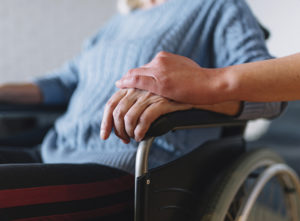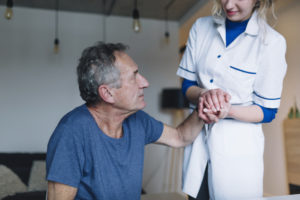Role of Physical Therapy on Parkinson’s Disease Treatment
August 10, 2018
Physical Therapy Benefits to Parkinson’s Disease
 Parkinson’s disease is a progressive, degenerative clinical condition that worsens over time. Typical symptoms include tremors, loss of facial expression, stiffness, slowing down of movement and a multitude of other problems.
Parkinson’s disease is a progressive, degenerative clinical condition that worsens over time. Typical symptoms include tremors, loss of facial expression, stiffness, slowing down of movement and a multitude of other problems.
In the past few years, there have been significant developments in the understanding of Parkinson’s disease. Muhammad Ali, the legendary boxer, was diagnosed with Parkinson’s in 1984 at the age of 42. He was not able to speak in public as a direct result of this condition until he passed away 2 years ago. The actor Michael J Fox is another well-known celebrity struggling with Parkinson’s. These high profile cases have helped raise awareness. Treatment includes a combination of medication, diet, exercise, lifestyle modifications, counseling and participation in support groups.
Physical therapy can help.
Parkinson’s disease is associated with the inability to produce the chemical dopamine in the brain. Dopamine is a chemical messenger that transmits information between brain cells. The reduction of dopamine causes symptoms such as tremors (typically described as ‘pill rolling’), tightening of the muscles (called rigidity) and slowing down of movements (called hypokinesia). These features can cause a great deal of disability, and can be effectively managed with physical therapy.
Advice For Caregivers
Since there is no known cure, the objective of physical therapy in Parkinson’s disease is to slow down the degenerative effects of this disease as  much as possible.
much as possible.
Parkinson’s disease affects each individual in a different way. A physical therapist will work closely with the patient and family members to monitor the condition and improve functional capacity as much as possible. This is a life-altering event and caregivers or family members may react with denial, confusion, fear, anger, or self-blame.
The physical therapist will conduct an evaluation of gait, balance, coordination, strength and posture of the patient. The caregiver is provided the tools and information to keep the patient mobile with movement patterns and home exercise programs.
Depending upon the severity and nature of the patient’s condition, the treatment plan focuses on the following:
- Developing an effective strategy to get in and out of bed and maintain balance in sitting and standing.
- Improving endurance, strength, and flexibility.
- Enhancing dexterity to perform hand movements.
- Maintaining coordination while walking and changing directions.
- Decreasing risk of falls.
- Ascending and descending stairs.
- Managing multiple tasks simultaneously.
- Participating in day-to-day activities.
Always Here For You…
 In the early phase, physical therapy helps maintain activity and reduce the risk of falling. Group activities like dance classes provide a refreshing way to explore movement and music.
In the early phase, physical therapy helps maintain activity and reduce the risk of falling. Group activities like dance classes provide a refreshing way to explore movement and music.
Over a period of time, the goal is to stimulate muscle activities and preserve existing function. As the disease progresses, patients may be confined to a bed or a wheel chair. Treatment is now focused towards maintaining vital bodily function. Walking aids like a cane or walker may be prescribed.
Anxiety and despair is common when dealing with a progressive condition with no known cure. Despite the complexity of the condition, the benefits of physical therapy are significant. Helping a patient cope with disability and dysfunction from a physical and emotional perspective is the foundation of physical therapy treatment for every condition, including one as progressive as Parkinson’s.
Contact us today to schedule an evaluation and we’ll show you several ways in which we can help you live a healthy, productive life. We are always here for you. Reach out to us today.
You can also book an appointment online!